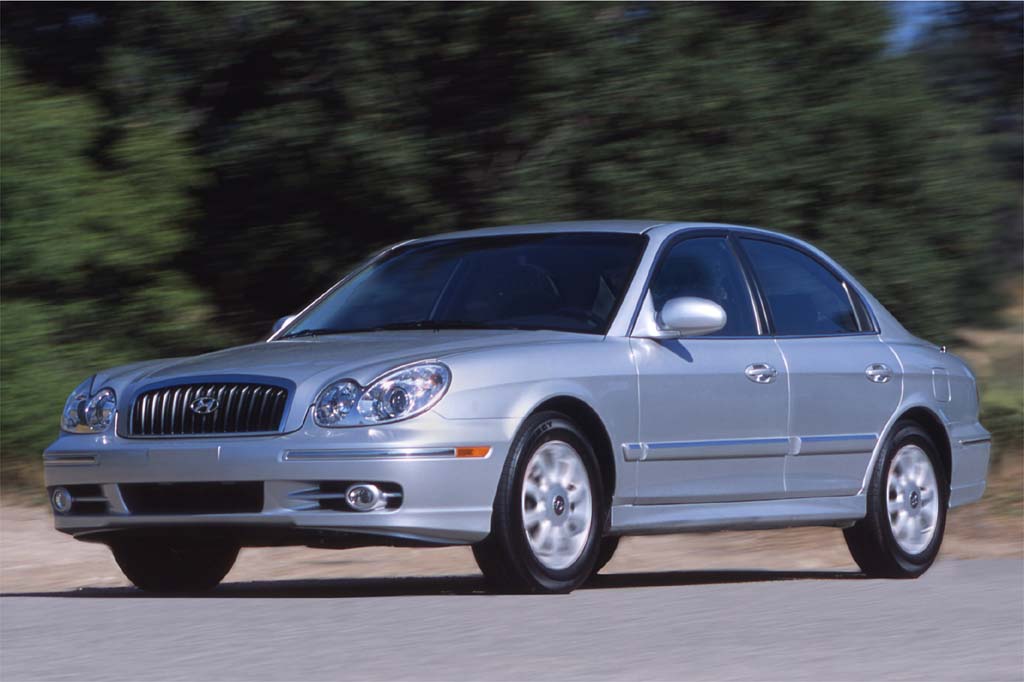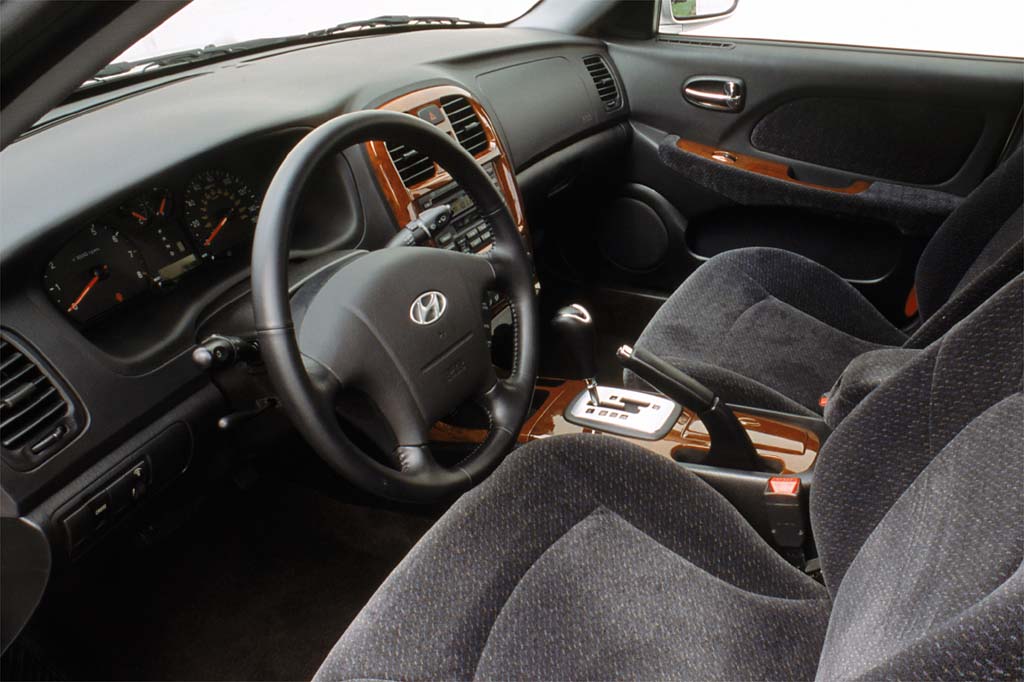| Midsize car; Built in South Korea |
|
|
| Good condition price range: $2,500 – $5,300* |

2002 Hyundai Sonata

2002 Hyundai Sonata

2002 Hyundai Sonata interior

2004 Hyundai Sonata

2004 Hyundai Sonata
| Pros: |
|
| Cons: |
|
For equipment and comfort, Sonata and its Optima compatriot are impressive values that came with generous warranties when new. No wonder both have drawn record sales. Steep depreciation and low resale values, as with most South Korean cars, help enhance their value on the used-car market. Overall, these two appeal as bargain-priced Toyota Camry alternatives, with little need for apology.
Overview
Hyundai’s front-wheel-drive compact sedan got revised styling and a larger V6 engine for 2002. The Sonata shared its mechanical components with Kia’s Optima. Hyundai owns the Kia organization.
Sonatas came in base, GLS, and LX trim levels. Base models held a four-cylinder engine. GLS and LX sedans got a 181-horsepower, 2.7-liter V6 engine, which replaced a 170-hp 2.5-liter. A manual transmission was standard with either engine, and a four-speed automatic was optional. The automatic transmission included a manual shift gate for selectable gear changes.
Once again, front side airbags were standard. GLS and LX sedans had standard four-wheel disc brakes, and antilocking was optional on all models. Optional traction control was limited to the GLS and LX.
Hyundai, like Kia, has been known for its long new-car warranty: 5-year/60,000-mile bumper-to-bumper coverage, plus a 10-year/100,000-mile powertrain warranty. Competitors included the Chrysler PT Cruiser, Mazda 626, and Volkswagen Passat.
Yearly Updates
| 2003 Sonata Lighted power-window switches and a battery-saver feature topped the short list of 2003 additions to Hyundai’s compact sedan. GLS and LX models used a 170-horsepower, 2.7-liter V6 engine. |
| 2004 Sonata Little changed for the 2004 Sonatas. |
| 2005 Sonata Heated front seats are newly available for Hyundai’s midsize sedan. Sonata continues in GL, GLS, and LX trim and, for 2005, adds a GLS Special Value version that is the only model with heated front seats. Also for ’05, a universal garage-door opener is new and included on the GLS Special Value and LX. |
